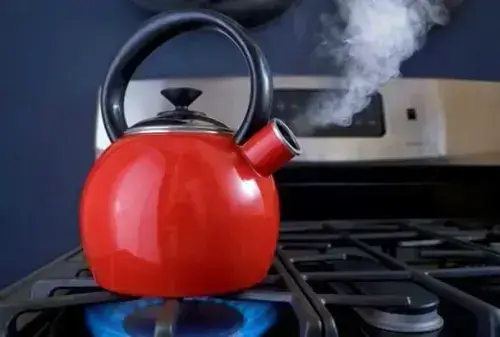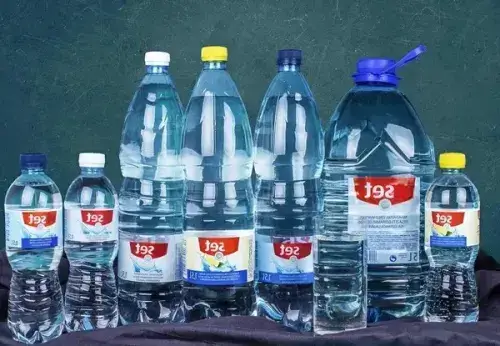Water importance. A completely simple, but at the same time known question, why is water the most important and is very necessary for our body.
Water importance, why?
Because without water we will not be able to exist at all! How to use water so that the body does not suffer?
Nutritionists recommend drinking at least a liter of water for every thousand calories consumed.
Another formula for the required amount of fluid is approximately 40 grams per kilogram of weight.
Water importance, the most common assumption.
If anything, we are talking about a normal eight glasses a day. In fact, there are many variables here.
The fact is that different people have different needs for water. It depends on body weight, season, health status, diet, etc.
Water, entering the body, helps to eliminate harmful decay products of substances, removes toxins, cleanses the body. Water also helps to regulate body temperature.
 In addition, water helps dissolve various substances (with its help, the hydrolysis process occurs) that enter the body.
In addition, water helps dissolve various substances (with its help, the hydrolysis process occurs) that enter the body.
The importance of water in the body.
By the way, water enters the body not only in the form of the liquid itself, but also with food.
- Bread contains 50% water by weight of bread.
- Meat: 67% water by weight
- Fish: 70% water by weight
- Vegetables: 90% water by weight
There is no need to remind you that it is absolutely necessary to drink water.
If you did not know, then even the appearance of the face deteriorates from a lack of water.
Of course, nails and hair are no exception, they become dry and brittle, the skin also becomes dry.
The importance of water, its deficiency.
If there is too little water in the body, metabolism is disrupted.
There is much less fluid and therefore the composition of gastric juice changes, the body’s thermoregulation is disturbed, the concentration of salts in the cells increases.
Most often, such a state of the body does not reach a critical state, because we drink a glass of water, starting to feel strong thirst and dryness in the mouth.
But such conditions signal that it was high time to use water.
In order not to lead to dehydration of the body, albeit mild, but harmful to the body, follow my little tips.
You need to drink when you want, not according to some schedule. Do not tolerate thirst, drink when you feel the need.
Do not quench your thirst with carbonated drinks, strong tea or coffee. You need water, non-carbonated, clean and filtered as much as possible.
Usually water is filtered through various filters. This is done to free the water from mechanical impurities.
There are filters that purify water from bactericidal and chemical impurities. Of course, the hardness of the water can also be reduced with a filter.
The importance of water, do not drink very cold water.
If you are on a diet, you need to drink more.
Reducing your diet reduces the amount of fluid that enters the body (as part of food).
Don’t be afraid – water does not make you fat, but on the contrary, it helps to remove excess substances from the body.
You need to drink slowly, it is not recommended to drink a glass of water quickly. Drink water in small sips.
By the way, water is even more important for children than for adults. Their metabolism is faster, they lose water faster.
Therefore, be sure to take a bottle of clean water with you if you go for a walk with your child.
So water is not only healthy, it is necessary for good health. To feel better, it is enough just to drink it on time, it is not difficult.
The importance of water.
Clean water and boiling. It is clear that high temperatures can completely sterilize water and free it from most microorganisms.
In this case, the water should be boiled for at least five minutes. This method has its drawbacks.
Heavy metal salts still remain in the water.
When boiling, a large amount of water evaporates and the concentration of salts in the water increases.
They are deposited in the form of lime. We can easily see this inside our kettle. To be honest, this is my final procedure before using water.
Have you heard of living water, probably not, then read about it here.
The importance of water, how else can we purify water?
Clean water, freezing. Freezing helps remove excess impurities from water.
Clean water freezes at a higher temperature. Specifically, faster than water containing impurities.
When water freezes, impurities remain between the ice crystals, that is, a mixture of water and salts.
These salts are drained and clean ice is melted to obtain purified water. Of course, it is cheesy, but it is worth mentioning as a method.
Clean water and salt.
Take a tablespoon of table salt for 2 liters of water. After dissolving the salt, let the water stand for 15-20 minutes, as a result of which many types of microbes partially die and heavy metal salts will precipitate.
The water will be acceptably clean, but not tasty and excess salt is not recommended for your body.
That there is such a method should be mentioned, if only it is useful for hiking. Is it not possible to buy water sold in the store, the purity of which can still be argued.
Silicon.
Silicon serves as a powerful water activator. It has bactericidal properties.
If there is no silicon in the house, which will certainly be the case, you can supplement the water with Jerusalem artichoke.
It has the highest percentage of silicon among vegetables –8.1%. The second place in the amount of silicon is occupied by radishes – 6.5%.
The importance of water, silver.
Silver has bactericidal properties and is often used in medicine. In addition, this metal perfectly purifies water.
You need to collect water in a large container and place a silver object at the bottom, for example, a silver spoon. By morning, silver ions will purify the water.
Clean water and activated carbon.
Activated carbon is used in the production of water filters. Such a filter removes unpleasant odors from various impurities in water, adsorbs various harmful substances.
If there is no such filter, to purify water, you need to pack 5 activated carbon tablets in gauze or cotton wool and place them at the bottom of a container of water.
By morning, the water will be clear and possibly even good for drinking.
Clean water and vinegar.
Purifying water with vinegar is a folk remedy. You need to add a little vinegar to the water.
Add one or two teaspoons of apple cider vinegar to 1 liter of water. Add honey and 3-5 drops of 5% iodine to the water. In such an environment, microbes die almost instantly.
Wool.
This is another popular way to purify water. One end of a woolen thread is dipped in water, and the other in an empty container.
The empty container is located below. Water from a full container will drip into an empty one. In this way, the water must be purified by changing the woolen thread several times.
Approximately so. What other ways do you know to obtain clean water?
Boiled water.
Boiled water is often called “dead” and for good reason. You may wonder why?
The answer will be in this article. I’ll start with a well-known action, first we put the kettle on the fire.
Of course, not directly on a fire, but on a gas stove or use an electric kettle, or some other heat source suitable for such an operation. We are waiting for the water to boil.
 Now the main thing is what happens to the water after the boiling process, as we know in our latitudes it would be 100 degrees Celsius.
Now the main thing is what happens to the water after the boiling process, as we know in our latitudes it would be 100 degrees Celsius.
By the way, the higher you are from the Earth’s surface, the faster the boiling occurs.
We can apply this if you are high in the mountains, for example, at an altitude of 3600 m, 85 degrees C is enough to boil water.
So, boiled water.
When water reaches a high temperature, the water begins to boil, oxygen leaves it. If you want to know, this is essentially an unacceptable luxury.
Oxygen molecules contained in water capture vitamins, beneficial minerals and deliver them to all tissues with the bloodstream.
Therefore, after the boiling process in water, this function of oxygen loses its significance.
By the way, this is why it is recommended to use dietary supplements only with unboiled water.
It should also be borne in mind that compounds with chlorine are converted into carcinogens when boiling.
Various heavy metals, residues of petroleum products tend to accumulate and ultimately harm the body.
Why do we boil water then?
The main purpose of boiling is disinfection. Indeed, a large number of various microorganisms enter the water environment from “dirty” water pipes.
It has been found that not everything is neutralized by your water supplier by adding chlorine.
Thus, boiling helps to achieve infection safety. Another benefit is that the hardness of the water and the amount of chlorine in the water will decrease.
There is also an opinion that if water is boiled no more than once, then it is able to cleanse the body of toxins.
It turns out that this can even be useful.
However, there is no clear answer. The main thing is to follow certain rules when boiling, as well as use untreated filtered water for daily use.
Many lovers of a healthy lifestyle try to remove the kettle from the heat immediately after the start of steady boiling. It is also useful to remove scale from the kettle as often as possible.
All this allows you to destroy microbes and does not make the water “dead”, moreover, adherents of a healthy lifestyle also drink ordinary untreated water.
Of course, after filtering it through various filters.
For example, I have a whole cascade of filters. The first is a coarse filter, then two fine filters follow.
To be honest, I drink coffee with boiled water, of course hot. If I am thirsty, I drink filtered “living” water.
Bottled water.
Recently, more and more people are choosing to drink water from bottles, rather than the tap water available in your home.
What kind of bottles, you ask? We are talking about those bottles that you buy in the store.
 It was believed that this was a safer and healthier way to quench your thirst.
It was believed that this was a safer and healthier way to quench your thirst.
However, in a recent study, scientists discovered that the average statistical water bottle contains more than 200 thousand dangerous nanoplastic particles.
Microplastics are pieces of plastic that are less than five millimeters wide, while nanoplastics are just one micrometer in diameter.
Studies show that they can enter the human body through the mouth, nose, and other exposed parts of the body.
Scientists have recently even found them in the human heart.
Plastic in water bottles.
Despite the widespread use of plastic, detecting microplastics in the body has been extremely difficult: traditional methods could only detect particles that were no larger than one micrometer.
Recently, scientists from Columbia University (USA) used stimulated Raman microscopy, a powerful optical imaging technique, to rapidly analyze nanoplastics with unprecedented sensitivity and specificity.
The results were published in the journal Proceedings of the National Academy of Sciences .
The authors of the scientific paper tested three popular brands of bottled water. Then they studied the plastic particles in the bottles, which are only up to 100 nanometers in size.
Bottled water, harmfulness.
It turned out that the average water bottle contains about 240 thousand plastic particles per liter, compared to 5.5 particles per liter in tap water.
This is 100 times more than experts previously assumed. The maximum value was 370 thousand particles per liter of water.
About 90% of the particles detected are nanoplastics.
Most of those found were nanoparticles of polyethylene terephthalate (PET).
It is used in the production of bottles, soda and sports drinks, as well as ketchup and mayonnaise.
PET is most likely released into the water when it is crushed or exposed to heat, causing pieces to peel off.
The scientists also found many particles of polyamide, a type of nylon. According to the study authors, it gets into the water due to plastic filters used to purify water before bottling.
The list also includes polystyrene, polyvinyl chloride (PVC), and polymethyl methacrylate (plexiglass).
If anything, scientists have described for the first time a disease caused by the accumulation of plastic in the body – plastiosis.
This pathology causes scarring of internal organs and digestive problems.
In addition, researchers have linked autism spectrum disorders and ADHD to the plastic component.
Good Day!



